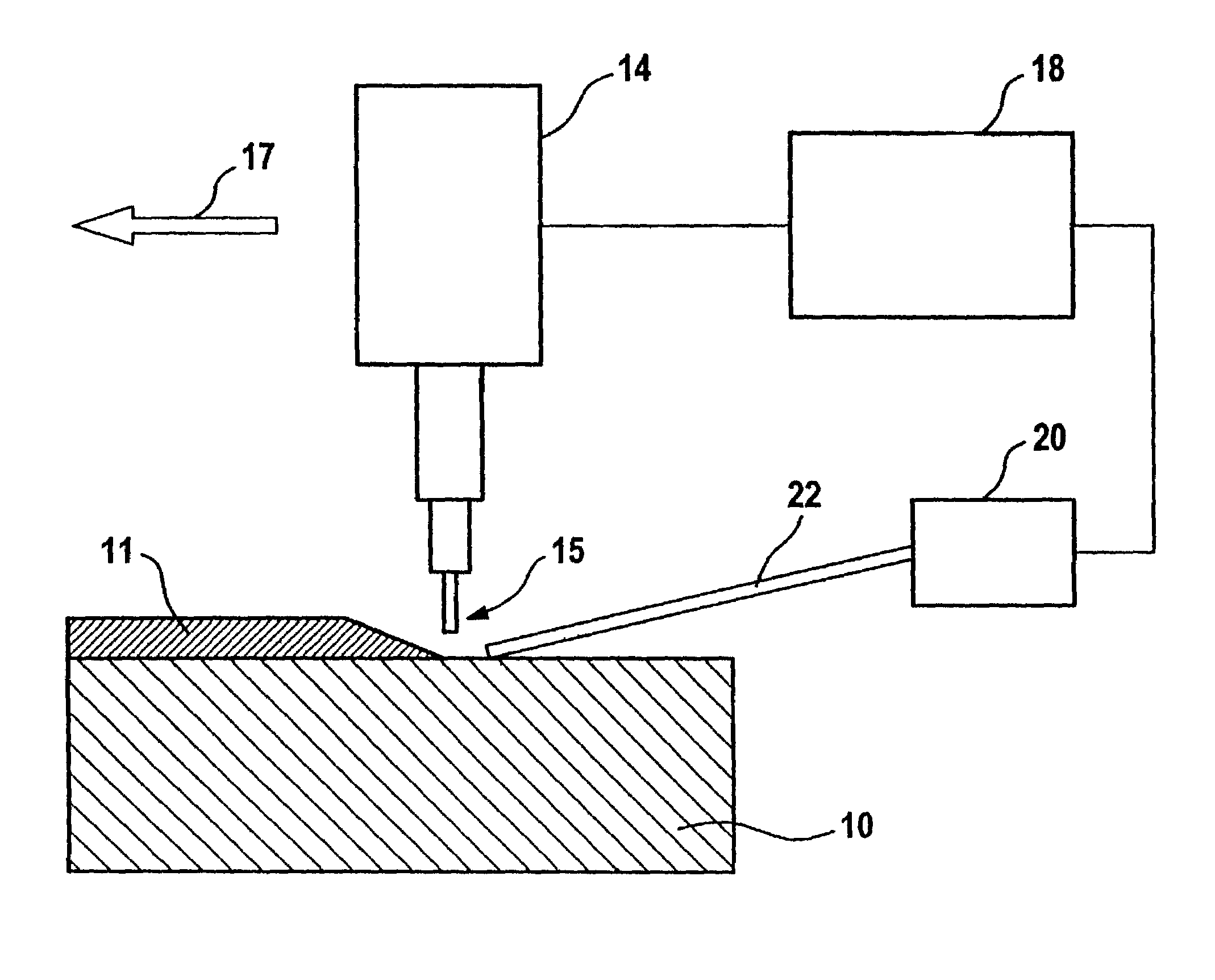Method for removing coating from power unit components and device for carrying out the method
a technology for power units and components, applied in the direction of metallic material coating process, chemical vapor deposition coating, fluid pressure measurement, etc., can solve the problems of base material, partially removed or chemically attacked, and achieve the effect of substantially more convenient implementation
- Summary
- Abstract
- Description
- Claims
- Application Information
AI Technical Summary
Benefits of technology
Problems solved by technology
Method used
Image
Examples
Embodiment Construction
[0016]A suitably clamped power unit component 10, e.g., a turbine blade, made of a nickel-based alloy, has a single-layer or multilayer coating 11 made of a layer of the type MCrAlY that is resistant to hot-gas corrosion, and a ceramic ZrO2 heat-insulating layer. An energy source 14 is assigned a beam head (laser or plasma source) 15 having the exit window of the high-energy radiation, the beam head being movable in the direction of arrow 17—the feed or advance direction.
[0017]Also allocated to energy source 14 is a control unit 18, having a computer, for regulating the energy output, which is connected to a spectrometer 20. A fiber line 22 may be used as a coupling element between coating 11 to be removed and spectrometer 20.
[0018]Depending on the application, the energy source may take the form, for example, of a laser energy source or a high-energy plasma-pulse source.
[0019]The layers to be removed have differences in their chemical composition with respect to the material of the...
PUM
| Property | Measurement | Unit |
|---|---|---|
| Concentration | aaaaa | aaaaa |
| Spectrum | aaaaa | aaaaa |
Abstract
Description
Claims
Application Information
 Login to View More
Login to View More - R&D
- Intellectual Property
- Life Sciences
- Materials
- Tech Scout
- Unparalleled Data Quality
- Higher Quality Content
- 60% Fewer Hallucinations
Browse by: Latest US Patents, China's latest patents, Technical Efficacy Thesaurus, Application Domain, Technology Topic, Popular Technical Reports.
© 2025 PatSnap. All rights reserved.Legal|Privacy policy|Modern Slavery Act Transparency Statement|Sitemap|About US| Contact US: help@patsnap.com


